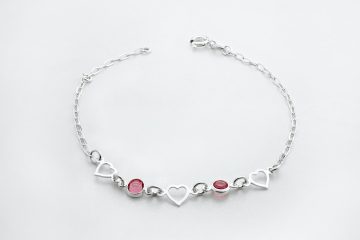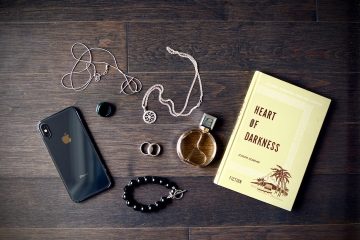Bracelets have been a cherished accessory throughout history, adorning the wrists of both men and women. These versatile pieces of jewelry have evolved over time, reflecting cultural, social, and fashion trends. From ancient civilizations to modern-day fashion runways, bracelets have remained a timeless accessory that continues to captivate our attention. In this article, we will take a fascinating journey through the origins and history of bracelets, exploring their significance, materials, and styles.
1. Bracelets in Ancient Civilizations
Bracelets have a rich and ancient history, dating back thousands of years. In ancient civilizations such as Egypt, Mesopotamia, and China, bracelets were worn as symbols of power, wealth, and status. These early bracelets were often made from materials such as gold, silver, and precious gemstones. They were intricately crafted with beautiful engravings and designs, reflecting the artistic prowess of these ancient cultures.
The Egyptians, for instance, believed that bracelets possessed magical and protective properties. They adorned their wrists with intricately designed bracelets made from materials like gold, lapis lazuli, and turquoise. These bracelets were not only fashionable but also served as amulets and talismans, believed to ward off evil spirits and bring good fortune.
2. Bracelet Symbolism in Different Cultures
Bracelets have held various symbolic meanings across different cultures throughout history. In ancient Rome, bracelets were worn as a sign of prosperity and social status. The wealthy elite would often wear gold or silver bracelets adorned with intricate patterns.
In Indian culture, bangles are a popular form of bracelets. They hold immense cultural and religious significance, representing marital status, fertility, and good luck. Brides, in particular, wear elaborate sets of bangles made from materials like gold, glass, or lacquer, as a symbol of their marital status and prosperity.
3. The Renaissance and Bracelet Fashion
During the Renaissance period in Europe, bracelets became more than just a symbol of wealth and power. They evolved into intricate pieces of art, adorned with gemstones and pearls. Renaissance bracelets were designed to be worn as statement pieces, showcasing the wearer’s individuality and social status.
4. The Influence of Victorian Era on Bracelet Styles
The Victorian era brought about a shift in bracelet fashion. Queen Victoria’s love for jewelry inspired a revival of medieval and Renaissance styles. Bracelets became more sentimental and romantic, often featuring lockets, cameos, and engraved messages. Sentimental bracelets were exchanged as tokens of love and affection, with each piece carrying a hidden message or personal significance.
5. Art Nouveau and the Birth of Modern Bracelet Designs
The Art Nouveau movement of the late 19th and early 20th centuries revolutionized bracelet design. Rejecting the rigidity of Victorian styles, Art Nouveau bracelets embraced flowing lines, natural motifs, and asymmetry. Artists like René Lalique and Louis Comfort Tiffany created breathtaking bracelets using materials such as enamel, glass, and semi-precious stones, embracing the beauty of nature and female form.
6. The Rise of Charm Bracelets
Charm bracelets gained popularity in the early 20th century and continue to be cherished today. These bracelets allow wearers to personalize their jewelry by adding charms that hold sentimental value. Charms can represent hobbies, milestones, or special memories, making charm bracelets a unique and personal accessory.
7. The Bohemian Influence on Bracelet Fashion
The 1960s and 1970s brought a wave of bohemian fashion, which heavily influenced bracelet styles. Bracelets made from natural materials like leather, beads, and feathers became popular, reflecting the free-spirited and non-conformist nature of the era. These bracelets were often stacked and layered, creating a bold and eclectic look.
8. The Influence of Pop Culture on Bracelet Trends
Pop culture has played a significant role in shaping bracelet trends. From Madonna’s iconic rubber bracelets in the 1980s to the friendship bracelets popularized by celebrities like Taylor Swift, these trends have made bracelets accessible and relatable to a wider audience. Pop culture has proven to be a powerful influence, constantly reinventing bracelet fashion and keeping it relevant.
9. Contemporary Bracelet Designs
In modern times, bracelet designs have become more diverse and innovative. From minimalist and delicate designs to bold statement pieces, there is a bracelet to suit every style and occasion. Materials range from traditional gold and silver to unconventional ones like rubber, leather, and even recycled materials. Contemporary designers experiment with shapes, textures, and colors, pushing the boundaries of traditional bracelet design.
10. Bracelets as a Form of Self-Expression
Bracelets have always been a means of self-expression, allowing individuals to showcase their personality, interests, and beliefs. Whether it’s a stack of bangles, a dainty chain bracelet, or a bold cuff, our choice of bracelets can reflect our individual style and identity. The versatility of bracelets allows us to mix and match, layer and stack, creating unique combinations that speak to who we are.
Conclusion
Bracelets have come a long way since their humble beginnings in ancient civilizations. From symbols of power and wealth to expressions of love and personal style, bracelets have continuously evolved to reflect the changing times. The rich history and cultural significance of bracelets make them more than just accessories; they are a testament to human creativity, craftsmanship, and individuality.
FAQs
1. What are some popular types of bracelets?
Popular types of bracelets include bangles, charm bracelets, cuff bracelets, tennis bracelets, and beaded bracelets. Each style offers a unique look and can be customized to suit personal preferences.
2. Can men wear bracelets?
Absolutely! Bracelets are not limited to any gender. Men can wear bracelets as a fashion statement or to express their individual style. Leather, metal, and beaded bracelets are commonly worn by men.
3. Are there any specific bracelet etiquette rules?
Bracelet etiquette is subjective and can vary depending on cultural norms and personal preferences. However, it is generally considered polite to avoid wearing noisy or oversized bracelets in formal settings where they may cause distractions.
4. How do I care for my bracelets?
The care for bracelets depends on the materials they are made from. It is best to follow the manufacturer’s instructions for cleaning and storing your specific bracelet. Generally, storing them separately in a soft pouch or box and avoiding contact with harsh chemicals or excessive moisture will help maintain their condition.
5. Can bracelets have sentimental value?
Yes, bracelets often carry sentimental value, especially those given as gifts or passed down through generations. Engraved messages, birthstones, or charms representing special moments can make bracelets deeply meaningful and cherished keepsakes.



